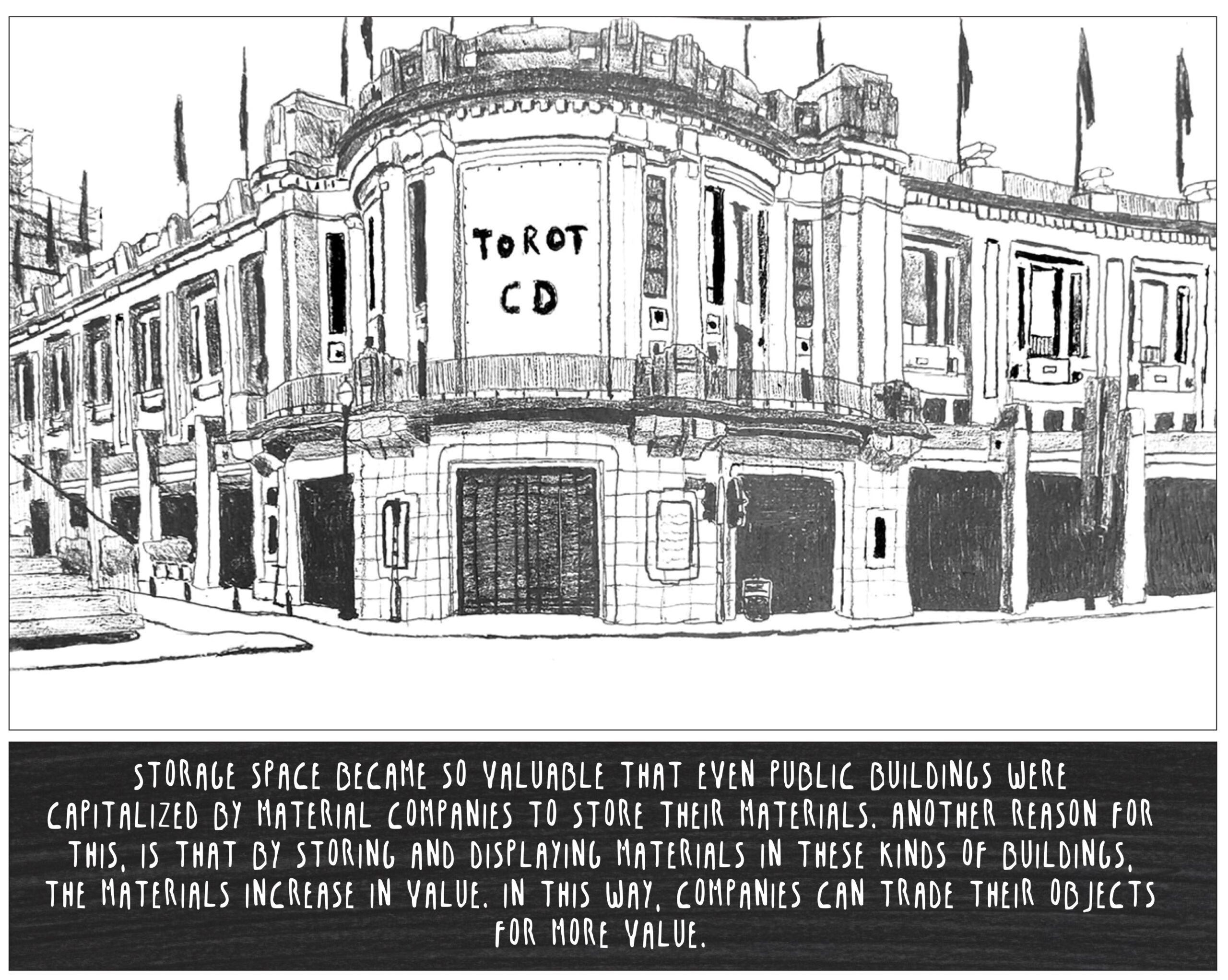| Supervisor(s) | Tomas Ooms |
| Campus | Gent |
| Language |
EN/NL |
| Studio or individual? | Individual |
| Max number of students? | 3 |
MPMD 2043
Designing A Mirco Public Material Depot: exploring circularity and the public realm
Imagine you are going to a circular material depot. Having entered the space, you discover that the windows you need for your project are no longer available? Moreover, there are now windows any more, at all…Now what…?
Circularity in architecture is still often a ‘business of promises’, based on the assumption that what we design now will evidently be reused in the future. Urban mining, however, will not be a one-to-one story. The materials that are harvested will not instantly find a new place, and what we require may not be in stock.
Where do the resources go between being mined (from demolition and assembly) and being reused in a new project? This can raise some interesting design issues such as: ‘What, no more lime plaster, data cables or windows? And now?’ And in doing so, it could possibly offer a new and surprising and unexpected architecture…
And while in and of itself this is also a fascinating spatial issue, the focus of the MPMD 2043 is on the logistics part of this story. Circularity is largely related to storage. Circularity has everything to do with storage. Where does the material stay between extraction (from demolition and dismantling) and reuse in a new project? What time interval is there in between? A few days, a few months, a few years?
This is an important and relatively underexposed part of the circular economy. Circular design and construction will not only revolve around how dismountable, modular, or qualitative something is, but will also largely be determined by what materials are available. And this mainly involves the coordination and organisation of logistic flows of transport and storage.
The MPMD 2043 dissertation aims to designerly explore forms of (temporary?) storage. But especially how these places can be more than just storage. You are invited to find out whether they can also be designed for interaction between people: as micro public space.
In what way can this storage be organize d spatially? How can this be done near the origin and destination of the materials? The MPMD 2043 project investigates whether these places of storage can also become places of meaningful encounter. Hence, we ask the question: Can these places become micro public places (*)?
Your design-research wants to look at how the spaces for circular storage can become micro public spaces: In what sense they can link the (re)allocation of available resources to a moment of exchange (knowledge sharing, experience, availability…) between people.
There are various ‘depots’ (ROTOR DC, Buurman…) and online (Opalis.eu). And there are examples of how industry and public space can co-exist (the LafargeHolcim concrete plant in Javel-Bas, Paris). And, of course, there are the recycling parks. These could be starting points. Which existing vacant or underused buildings (parking buildings, oversized buildings…) could be adapted into an MPMD? What role could the government play in supporting the logistic part of the circular building industry? And how it can do so through the creation of (micro) public space. As a micro public space, the MPMD 2043 is at the intersection of material, ‘know how’ and public interaction and exchange.
MPMD 2043 will be a research by design in which you will develop and design innovative proposals in the context of circular building and design and how certain aspects of it can be accommodated in public space. And more even, how these circular material depots can be conceived of as public space. Your work will consist of three parts: You will be involved in the ongoing MPMD 2043 research project **, you will explore the existing concepts and spatial components of the circular economy and through a combination of evidence-based design and imagination, you will propose a fully developed architectural design for an MPMD 2043. The outcome of your exploration will be a book in the form of a project monograph. A collaboration with ROTOR DC will be set up.
If you have any questions regarding the MPMD 2043 Master dissertation please contact me: tomas.ooms@kuleuven.be
Image: extract from the master dissertation ‘Brussels In Limbo‘, Kobe De Greef, 2022
* Micro Public Spaces, Hans Frei en Marc Böhlen, Situated Technologies Pamphlet 06, The Architectural League of New York
** MPMD 2043 is Bouwmeesterlabel research project with Vlaams Bouwmeester, VAi, Studio Tuin en Wereld and MVVarchitects.

